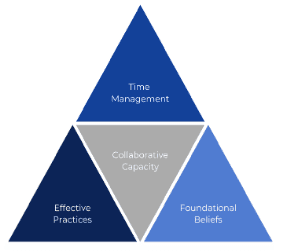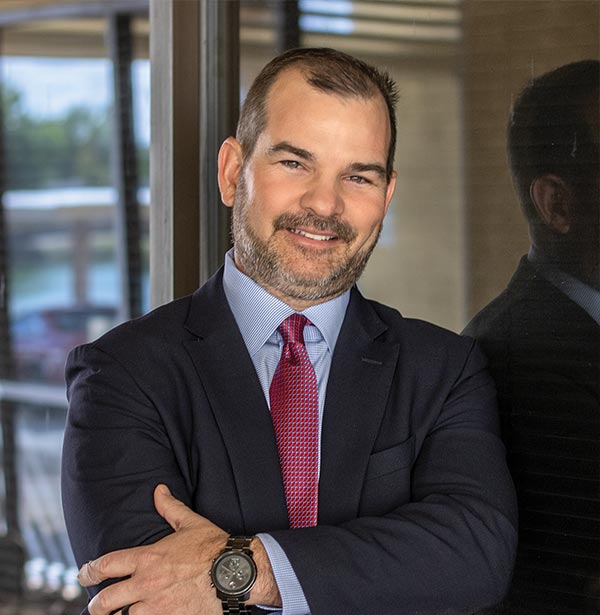A Leader’s Collaborative Capacity
This is a guest post from authors Phil Clampitt and Bob DeKoch, discussing their podcast interview experiences discussing their pinnacle book, Leading with Care in a Tough World.
When we started doing podcasts to promote our new book, some of the most intriguing conversations revolved around a leader’s capacity to collaborate. These enriching discussions prompted us to draft this post to clarify and enhance our thoughts about collaboration.
Three Collaboration Possibilities
As a starting point, consider three people – a team leader and two team members. We can symbolize this as:
L (Leader) + TM (team member 1) + TM (Team member 2)
A naïve leader might consider this to be the collaborative formula – all you need to do is assemble a team and assume that collaboration will occur.
However, leaders who care recognize three possibilities:
Faux Collaboration – teams dominated by the leader, either explicitly or implicitly, that have the appearance of collaboration but do not produce collaborative outcomes. The team may even engage in discussion but if, in the end, the only idea that “wins” is the leader’s, then the result is faux collaboration – – collaboration in name only. Over time faux collaboration leads to disengagement and quiet quitting as the team learns the unstated conversational rules. In this case, the L + TM + TM equation results in this outcome:
1 + 0 + 0 = 1
Collaboration – collaborating leaders seek to add and enhance ideas with other team members’ input. The outcomes are more than the sum of their individual insights because poor insights are weeded out and good ones enriched. In this case, all team members fully share differing but enhancing perspectives. In this case, the L + TM + TM results in this outcome:
1 + 1 + 1 = 3 or 4 or 5
Collaboration-plus – Sometimes teams can go beyond collaboration and seize upon emergent ideas that none of the participants ever envisioned when joining the team. It’s the surprise or “ah-ha” moment that teams sometimes reach when they recognize a transformative moment. In this case, L + TM + TM equation might be expressed as:
1 + 1 + 1 + E (emergent) = 9 or 10
Collaborative Capacity
Leaders who care collaborate while aspiring to the collaboration-plus level. We believe the secret to that desire lies in three linked issues.
Time management – Collaboration takes time. Caring leaders allocate the proper amount of time in their team meetings and personal schedules to make sure they do it well. They avoid forcing premature consensus, which may mean becoming more flexible on deadlines. It also means being selective about issues on which they seek collaboration. Sometimes it’s not possible to devote the time to collaborate on tactics, but thoughtful leaders will make the time to collaborate on strategic issues. In short, caring leaders think carefully about how much time they allocate to collaboration because they want to avoid stumbling into faux collaborative territory and succumbing to the team’s collaborative overload.
Effective Practices – Collaboration is a skill that can be learned by embracing the right visible and subtle practices. For example, one visible practice is to provide agendas before meetings to help moderate extroverts’ spontaneity and encourage introverts to contribute. A more subtle leadership practice would be arranging the agenda so that problem analysis precedes the development of possible solutions. By adeptly using the right intertwined subtle and visible practices, leaders enhance the collaborative capacity of the team.
Foundational Beliefs – Collaborative leaders firmly embrace a number of fundamental beliefs that support their practices. For instance, caring leaders learn to embrace uncertainty, which means that they are open to new possibilities and perspectives. If leaders believe they have all the answers, then they are not embracing uncertainty and undermine even the best collaborative practices.
Image by Matt Walsh

So What?
So, what does this model suggest that leaders do to build their collaborative capacity?
Assess their collaborative time management practices – Naïve leaders would say, “I collaborate on everything.” It’s simply not possible in a fast-paced world. So, caring leaders are more strategic by asking the question, “Are we devoting enough time to collaborating on the right issues?”
Build both visible and subtle skills levels. For instance, developing active listening skills requires the ability to ask the right kinds of questions (visible) and nonverbally attending to the answers (subtle). It takes practice and Coaching to perfect this basic collaborative skill. We’ve identified other intertwined skills in the book.
Become more introspective about core beliefs and how they are manifested in day-to-day interactions. If leaders think they are practicing collaboration, but they are not seeing the results, then it may be time to re-examine their core beliefs. For example, do they really value respecting other people’s opinions or are they more interested in the expediency of decision-making?
Developing a leader’s collaborative capacity is much like creating a healthy Exercise program: it requires time, skill, and the right beliefs. We’ve only scratched the surface in the post but we hope it prompts further enriching conversations about the essential issue for leadership success.
Originally Published on https://www.breakfastleadership.com/





























